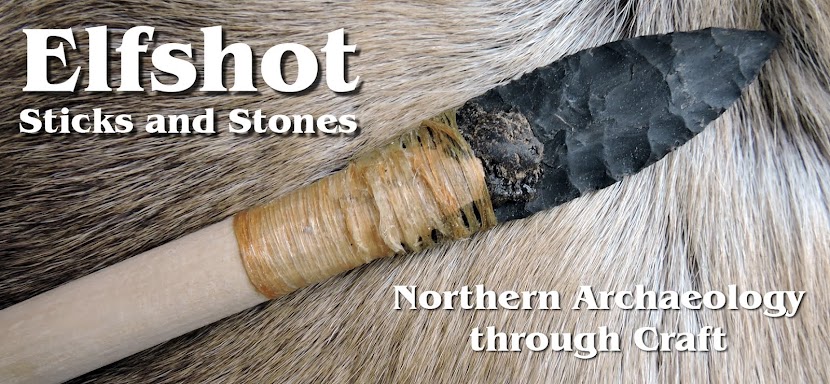 |
Reproduction Beothuk
Artifacts |
I dropped off two sets of Newfoundland and Labrador artifact reproductions to Memorial University of Newfoundland's Archaeology Department this morning. One set is Beothuk and the other is Groswater. They will be used in sandbox digs to give archaeology students a taste of excavation prior to attending field school. The sets include a few diagnostic chert, bone, and iron artifacts, along with broken or incomplete tools, cores, and debitage. I break plenty of tools when I'm working on reproductions, and these sorts of orders provide a forever home for broken or failed attempts.
 |
| Assemblage of Groswater artifact reproductions. Includes diagnostic artifacts, broken tools, microblades, and lithic debitage. |
 |
| Reproductions tools and microblades in chert |
 |
| Top Row: Groswater endblade, asymmetric knife, earred endscraper, chipped and ground chert burin-like tool. Bottom Row: Various broken tools (mostly the bases of box based endblades that broke during notching) |
 |
| Groswater assemblage |
 |
| Beothuk assemblage. Reproductions representing the post-contact Beothuk period and their archaeologically known ancestors (Beaches and Little Passage complexes). The bottom pieces are a hammerstone, flakes, and chert core fragments. |
 |
| Left: Beaches side notched projectile point (top), Little Passage corner-notched projectile point (bottom). Middle: Beothuk iron arrowhead hammered out of a square forged nail. Right: Triangular Biface (top), Beothuk arrowhead (middle), Flake scraper (bottom). |
 |
| Diagnostic Beothuk tools, including a bone comb and gaming piece. The chert pieces on the right are abandoned or broken preforms. |
Photos: Tim Rast


















